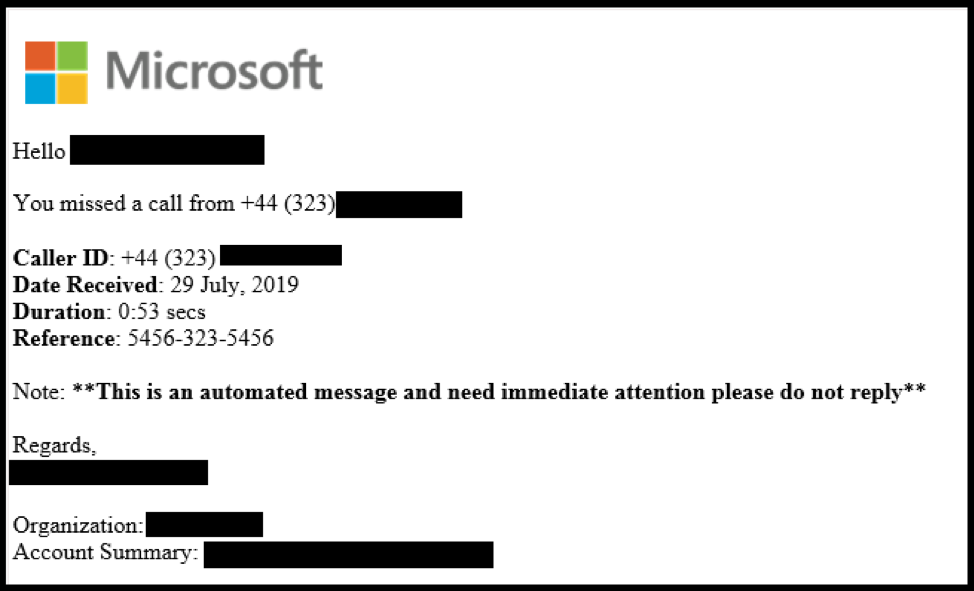
Cybercriminals seem to get more and more sophisticated with their attacks, and phishing scams are no different. The McAfee Labs team has observed a new phishing campaign using a fake voicemail message to trick victims into giving up their Office 365 email credentials. During the investigation, the team has found three different phishing kits being used to exploit targets.
How exactly does this sneaky phishing scam work? It all begins when a victim receives an email stating that they’ve missed a phone call, along with a request to log into their account to access the voice message. The email also contains an attached HTML file that redirects the victim to a phishing website. This website prepopulates the victim’s email address and asks them to enter their Office 365 credentials. What’s more, the stealthy attachment contains an audio recording of someone talking, leading the victim to believe that they are listening to a legitimate voicemail.

Once the victim enters their password, they are presented with a page stating that their login was successful. The victim is then redirected to the office.com login page, leading them to believe that everything is perfectly normal. Little do they know that their credentials have just been harvested by a cybercriminal.
While this sneaky scheme has been primarily used to target organizations, there is much to be taken away from this incident, as cybercriminals often disguise themselves as businesses to phish for user data. To protect yourself from these stealthy scams, check out the following tips:
- Go directly to the source. Be skeptical of emails claiming to be from companies with peculiar asks or messages. Instead of clicking on a link within the email, it’s best to go straight to the company’s website to check the status of your account or contact customer service.
- Be cautious of emails asking you to take action. If you receive an email asking you to take a certain action or download software, don’t click on anything within the message. Instead, go straight to the organization’s website. This will prevent you from downloading malicious content from phishing links.
- Hover over links to see and verify the URL. If someone sends you an email with a link, hover over the link without actually clicking on it. This will allow you to see a link preview. If the URL looks suspicious, don’t interact with it and delete the email altogether.
And, as always, to stay on top of the latest consumer and mobile security threats, be sure to follow @McAfee_Home on Twitter, listen to our podcast Hackable? and ‘Like’ us on Facebook.
The post 3 Tips to Protect Yourself From the Office 365 Phishing Scams appeared first on McAfee Blogs.
Premium Domain Names – transcom.uk
Transcom ISP – The UK’s Best Business ISP
DoubleCheck any website at doublecheck.uk